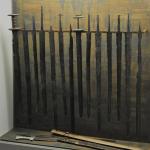Monday, November 21, 2011 6:38 PM + in the quote box
Freddie Mercury (born Freddie Mercury, real name Faruch Balsara, Guj. ફારોખ બલ્સારા\u200c;
September 5, 1946, Stone Town, Zanzibar - November 24, 1991, London, UK) - British singer and musician of Parsian descent, vocalist of the rock band Queen.
Freddie Mercury was born on September 5, 1946 on the island of Zanzibar in the family of Pomsi Bomi (1908 - 12/25/2003) and Jer (09/29/1922 -?) Balsara. At birth, the boy received the name Farukh, which means "beautiful", "happy." Faroukh's father worked as a cashier at the Supreme Court of England and Wales.
![]()
In 1952, Freddy had a sister in Kashmir. In 1954, his parents identified Faruh to St. Peter's School in Panchgani, 500 kilometers from Bombay. There, Freddie began to live with his grandfather and aunt. The name "Farukh" was inconvenient for pronunciation by classmates (mostly English), so friends began to call him Freddy.
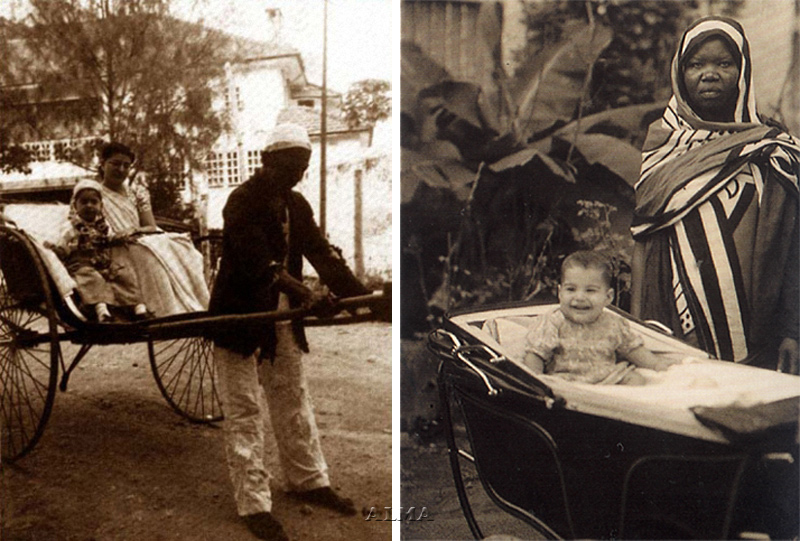
At the age of ten he became the champion of the school in table tennis, at the age of twelve he received the trophy for winning the youth all-around, as well as the certificate "for excellence in all sciences and arts." Freddie studied well, showed interest in music and painting, constantly did drawings for friends and relatives. He also sang in the school choir and participated in productions of performances.

From an early age, Freddie was fond of music. Singing occupied almost all his free time, sometimes to the detriment of his studies. The musical abilities of Freddy drew the attention of the director of the school of St. Peter. He wrote a letter to the boy’s parents, in which he suggested organizing piano courses for Freddy for a small fee. Parents agreed, and Freddy began to study with enthusiasm. At the end of his studies, he received a fourth degree in theory and practice (English Piano Grade IV).
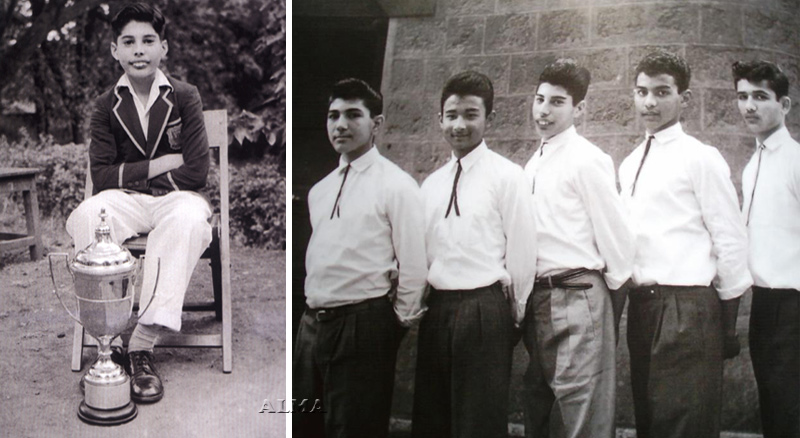
In 1958, five friends from St. Peter's school - Freddie Balsara, Derrick Branche, Bruce Murray, Farang Irani and Victor Rana created their first rock band, which they called The Hectics (Russian Fidgets). The group played at school evenings, dances and anniversaries. From childhood, Freddie was always shy of his unusual teeth and therefore, when he smiled, he covered his mouth with his hand. This habit remained with him even when he became an adult ...
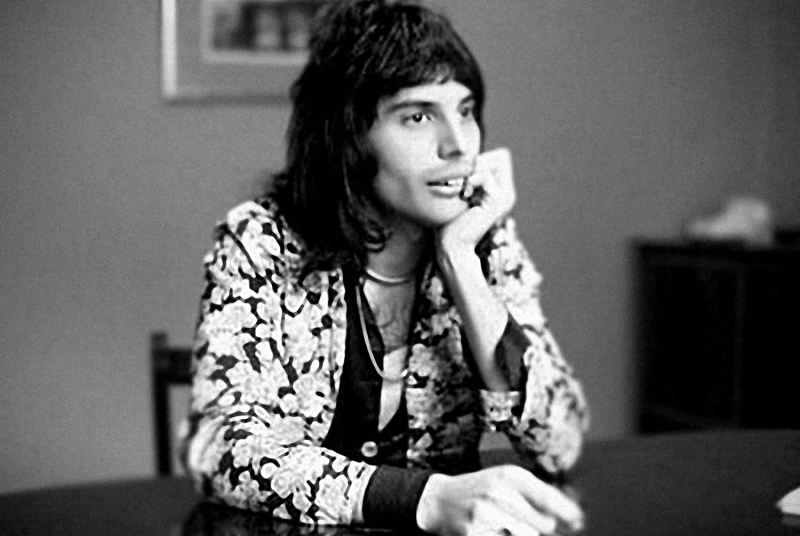
In 1962, sixteen-year-old Freddy graduated from St. Peter's School in Panchgani and returned to Zanzibar. In early 1964, the British government transferred Zanzibar to the Arab Sultan, and a week after that Zanzibar was declared an independent state. In connection with the political unrest in the country, the Balsar family, taking only two suitcases with clothes, flew to the UK.

Arriving in England, the Balsar family first stayed with relatives living in Faltham, Middlesex County, then they bought their own home. Freddie, who at that time was eighteen years old, entered the Islesworth Polytechnic School, where he studied mainly painting, as he wanted to go to art college. The family had problems with money, so during the holidays Freddie had to earn extra money. At first, he worked in the logistics department of Heathrow Airport in London, then as a loader at Faltham's warehouse.
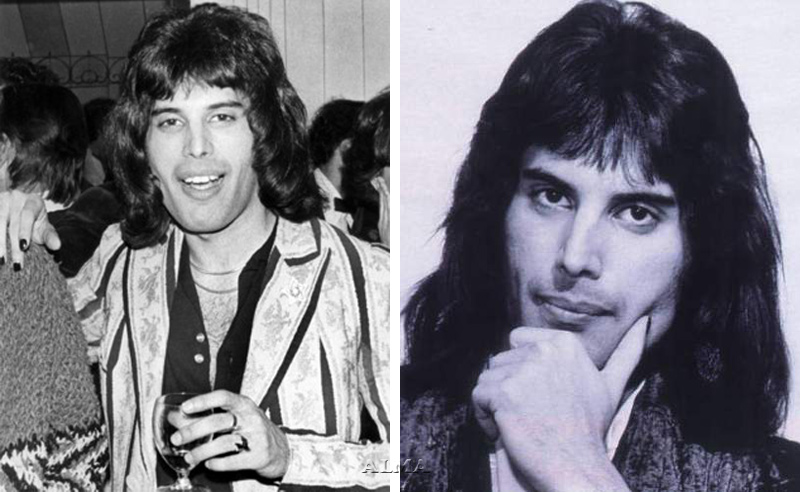
In May 1966, graduating from Islesworth with a high mark in painting, Freddy was interviewed at Ealing College of Art in London, where he began to study at the Department of Graphic Illustration in the fall of that year. Soon after, Freddie left his parental home and settled in a rented apartment in Kensington with his friend Chris Smith. Kensington in those years was the heart of London's bohemia and art. Freddie drew a lot, a special place in his drawings was occupied by his idol - guitarist Jimi Hendrix.
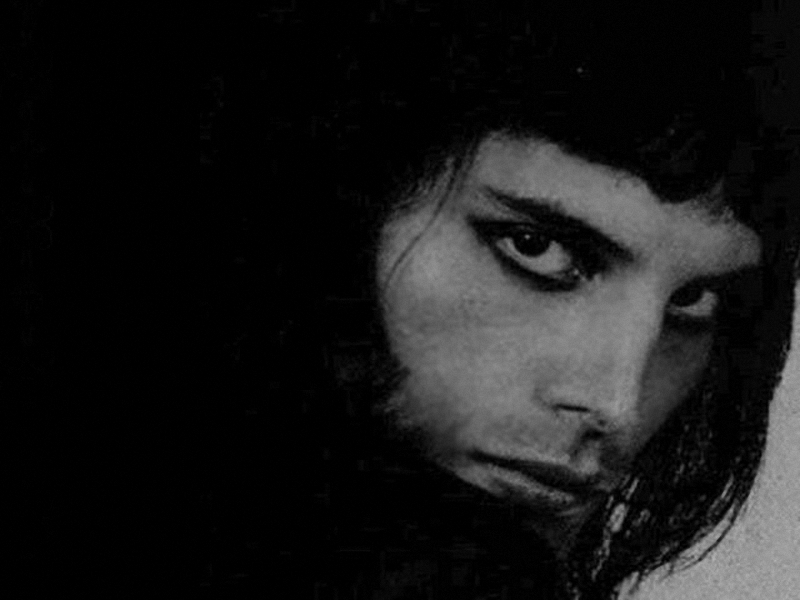
In the summer of 1969, twenty-three-year-old Freddie graduated from Ealing with a diploma in graphic design. Soon, Freddy moved to Roger Taylor, and they opened a store in the Kensington market, where they sold both Freddy's paintings and other goods. On August 13, Freddy met with the Liverpool band Ibex. Ten days after the meeting, Freddie already knew the entire repertoire of the group, added some of his songs and went with them to their first joint concert, in Bolton, Lancashire. Their concerts were held as part of the annual blues festival, so the events were covered by the press.
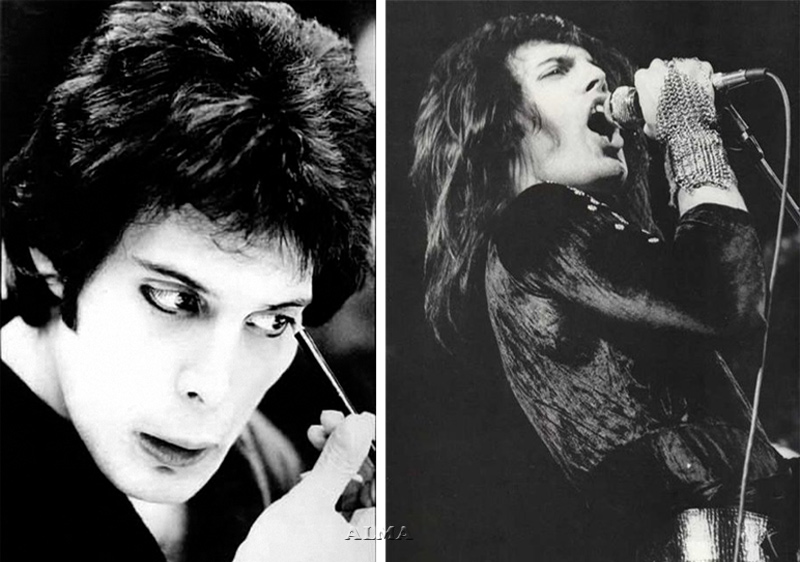
In September-October 1969, at the suggestion of Freddy, the group was renamed Wreckage ("Shipwreck"), and Freddy went to the trick to convince everyone to change the name of the group. After renaming Wreckage, they gave a few concerts, but soon, largely due to the fact that Mike Berzin returned to Liverpool to study, the group broke up. Freddy decided to find a new group. Among the ads in Melody Maker, he found a vocalist job in the Sour Milk Sea ("Sour Milk Sea") band, but Sour Milk Sea soon ended.
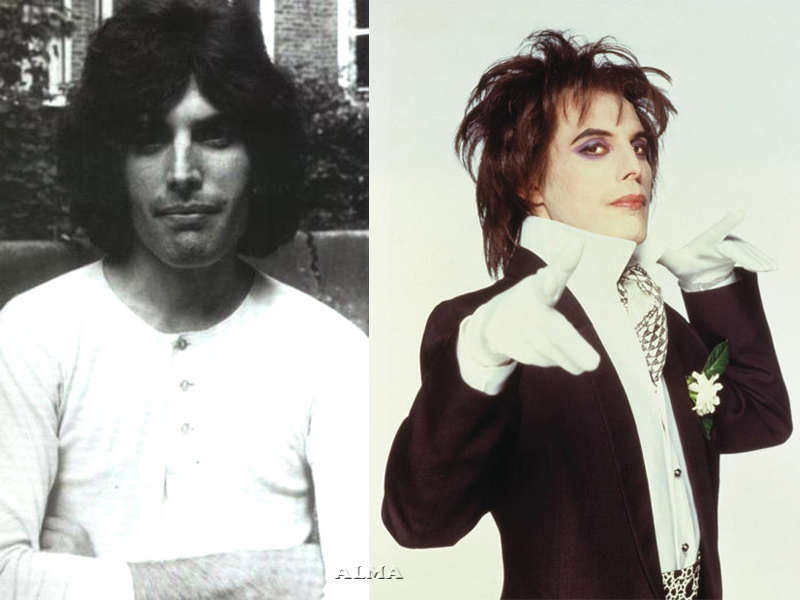
At the end of 1969, Freddie Mercury in West Kensington met thanks to Brian May with Mary Austin, with whom he lived for about seven years. But then they broke up. Once, everything changed when Freddy admitted that he had to tell her something very important; something that will change their relationship forever. Mary explains: “I was a little naive, and it took me a while to realize the truth. In the end, he was glad that he told me that he was bisexual. " Mary decided it was time to leave, but he convinced her not to go far.
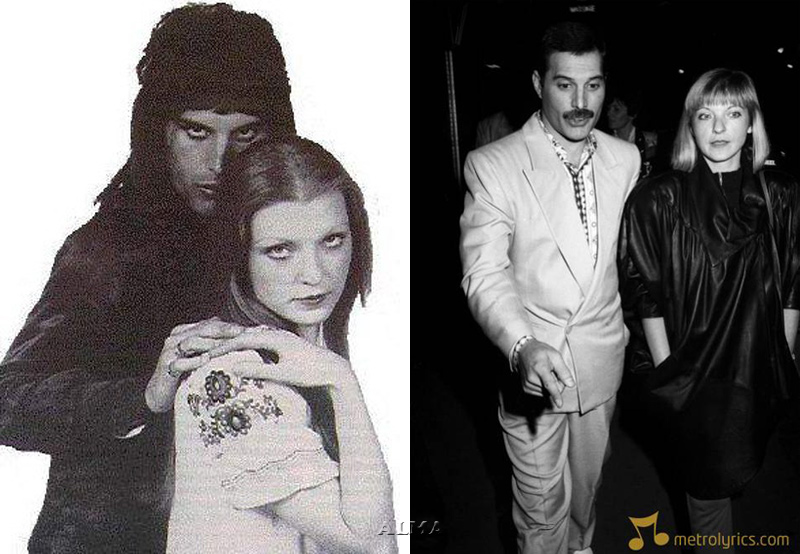
They remained close friends, Mercury made her his personal secretary, and often admitted that Mary was his only true friend. In an interview in 1985, Mercury said: “All my lovers ask me why they cannot replace me with Mary. But that is simply not possible. She is my only friend, and I do not need anyone else. She was actually my wife. We believe in each other, and that’s enough for me. ” The singer dedicated several songs to Mary, of which the song “Love of My Life” is the most significant. Mercury was the godfather of Mary's eldest son, Richard, and left her mansion after her death.
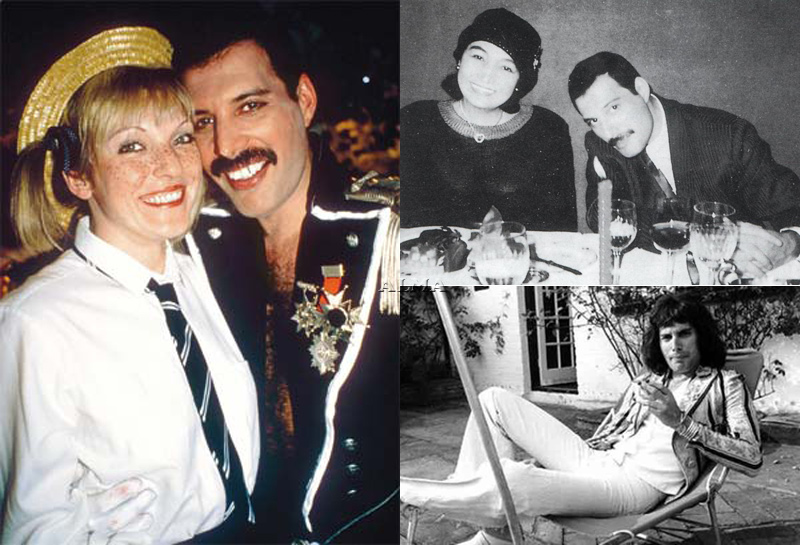
In April 1970, Tim Staffel decided to leave Smile, and Freddie took the place of the vocalist in their group. At his initiative, the group was renamed Queen. After the composition of the group became permanent, Freddy decided to draw it. According to one version, the emblem of Great Britain was taken as a basis, with the Latin letter Q around which the zodiac signs of the Queen members are “woven”: two Leo - John Deacon and Roger Taylor, a crab crawling out of the fire - the sign of Cancer - Brian May. Above all the figures rises the bird Simurg - the sacred symbol of Zoroastrianism, symbolizing the freedom of the spiritual from the earth. Two fairies with wings are good helpers for heroes from the British epic.
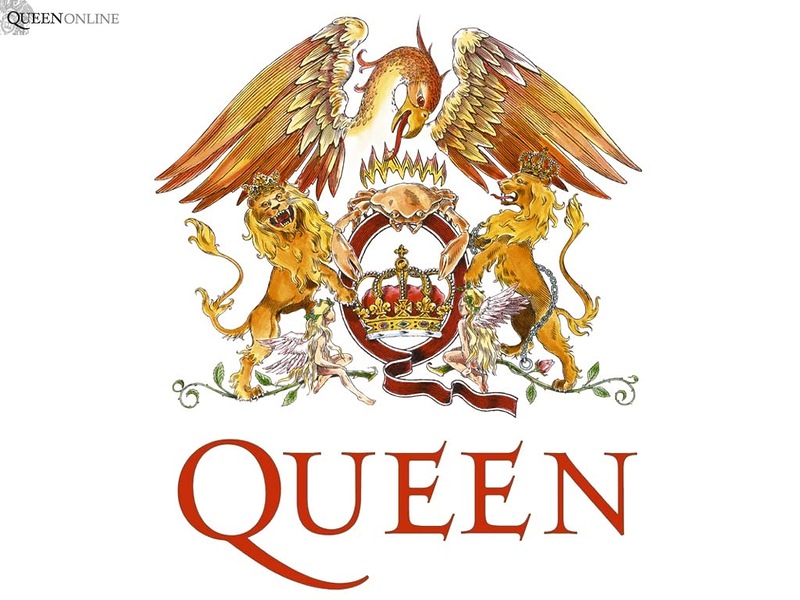
In 1972, while recording Queen's debut album Queen, Freddie decided to change his surname Balsar to the creative pseudonym "Mercury" (Eng. Mercury - "Mercury" and "Mercury"). Freddy became the author of the first queen songs, hit the British charts - "Seven Seas of Rhye" (1973). He also composed the band’s first hit, “Killer Queen” (1974), as well as Queen’s most successful track, “Bohemian Rhapsody”. The song was predicted to fail because of its length, by the standards of the time, for a single and for playing on commercial radio stations and mixing several styles and genres of music. But Queen released the song as a single, shot a video clip for it, which became a revolution in music videos, some even call it the “first video clip”, although the clips for the songs were shot before.

In 1975, Queen toured in Japan. The musicians were extremely surprised by the warm welcome of the Japanese fans of the group. Brian May recalled: “We had some success in England and the USA, but we had never seen such fanaticism and adoration before. Suddenly in Japan we began to feel like real stars such as The Beatles and Bay City Rollers, people greeted us with cries of delight, which was news to us. ” Freddie fell in love with Japan and became a fanatical collector of Japanese art.
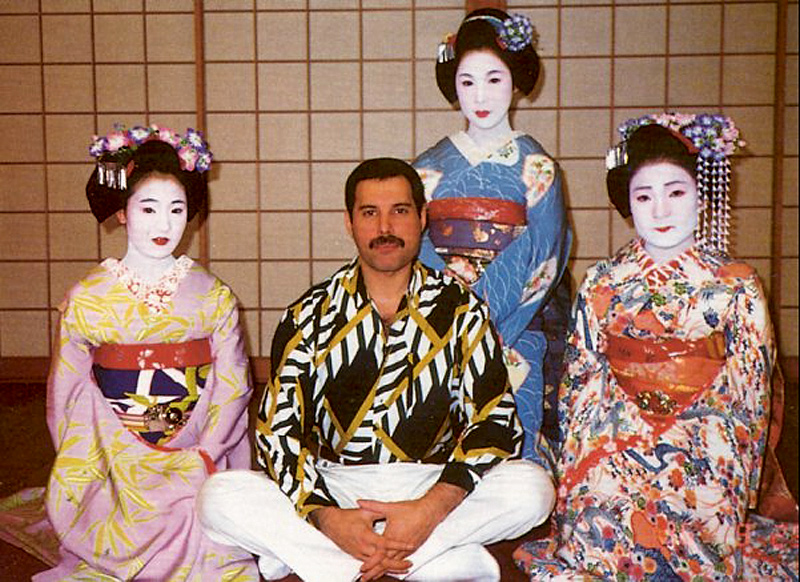
On October 7, 1979, Freddie’s old dream came true - he performed with the Royal Ballet. For his performance, he chose the songs “Bohemian Rhapsody” and “Crazy Little Thing Called Love”. In 1980, Freddie changed his image - he cut his hair short and grew a mustache.
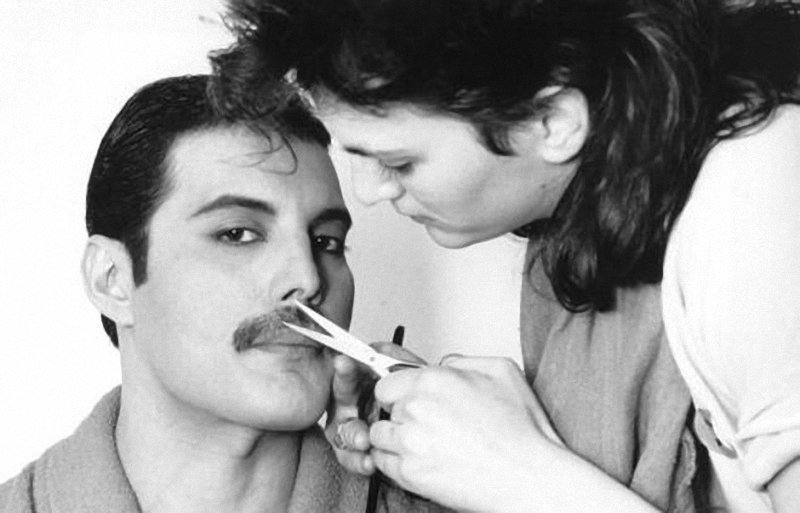
Freddie Mercury had a short relationship with the famous Austrian actress Barbara Valentin, whom he met in 1983. Mercury spoke of their relationship: “Barbara and I created an alliance that was stronger than with any of my lovers over the past six years. I really could tell her everything and be with her myself, which happens to me very rarely. " The musician also mentioned her among others in the dedication of his solo album “Mr. Bad Guy. "
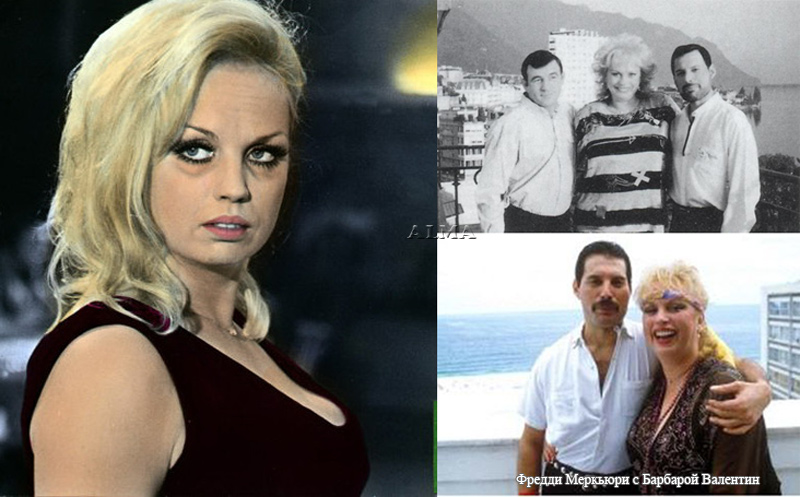
From the very beginning of his popularity, the image of Freddie Mercury raised a lot of questions about his orientation, but Mercury always avoided talking about his personal life, joked, or answered vaguely. In a 1984 interview with the Canadian Music Express magazine, he said: “They always tried to put me in the same box with gays. At first it was like this: I am bisexual; then they talked about the appearance of the hermaphrodite, in addition, I did not resist some gossip, because they contributed to the catchy If you are hinting at my sexual preferences: very simple - I do this with the one I love. And no hidden bottom. My personal life does not concern anyone. " However, Mercury once admitted: “I had more lovers than Liz Taylor, of both sexes, but my connections did not end there. As if I devour people and destroy them. ”
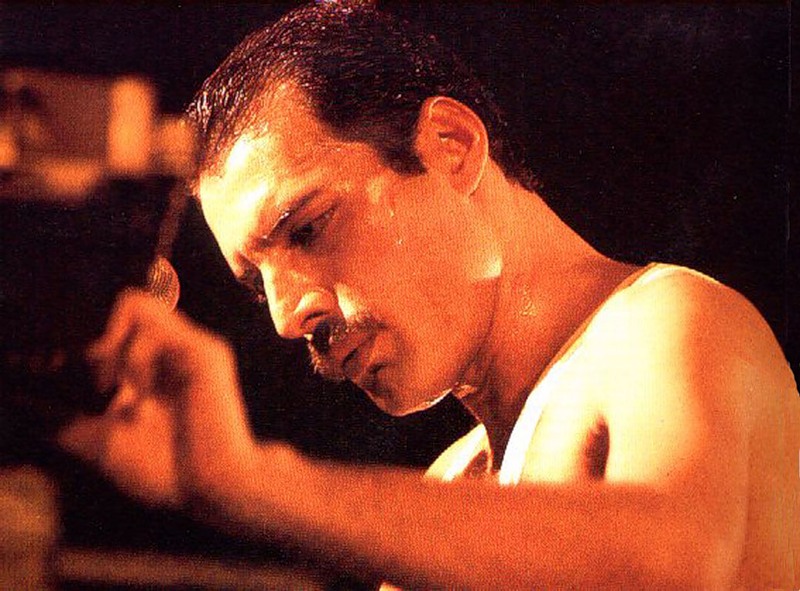
July 13, 1985 was a special day for Queen and Freddy. On this day, a Live Aid concert was held - a grand show at Wembley Stadium, which was attended by 75 thousand spectators and many famous artists such as Elton John, Paul McCartney, David Bowie, Sting, U2 and many others (in parallel with the Wembley Show , there was a concert in Philadelphia). The concert was broadcast by television around the world, that is, more than a billion people watched it! With their performance, Queen secured a place in history, and all observers, journalists, fans and critics were unanimous that the group was the highlight of the program.
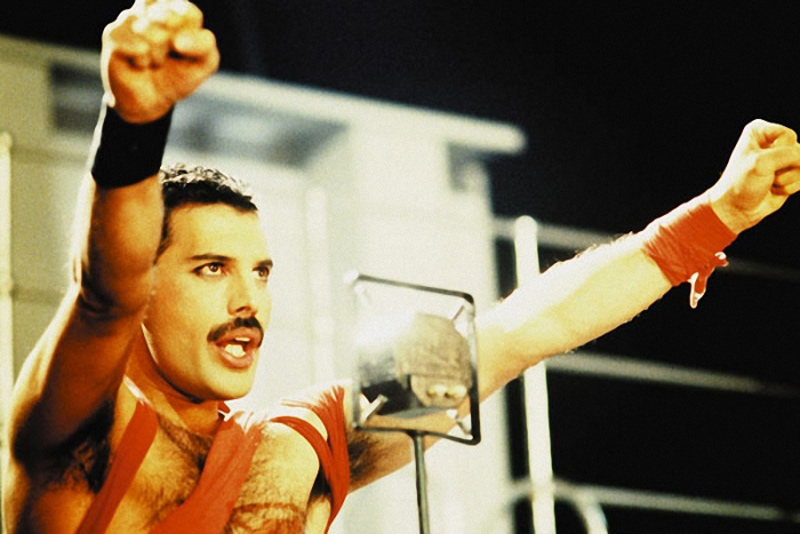
A year later, on July 12, 1986, Queen again gave a concert at Wembley Stadium as part of the Magic Tour in support of A Kind of Magic. This concert was attended by over 120,000 people, and was later published as Queen at Wembley. The final show of the tour in Nebworth on August 9 was Queen's last performance with Mercury. In March 1987, Freddie Mercury met Montserrat Caballe in Barcelona and presented her with a cassette with several of his new songs. These songs made a strong impression on Caballe, and she even performed one of them at a concert in London, in Covent Garden, to the surprise of Freddie Mercury.
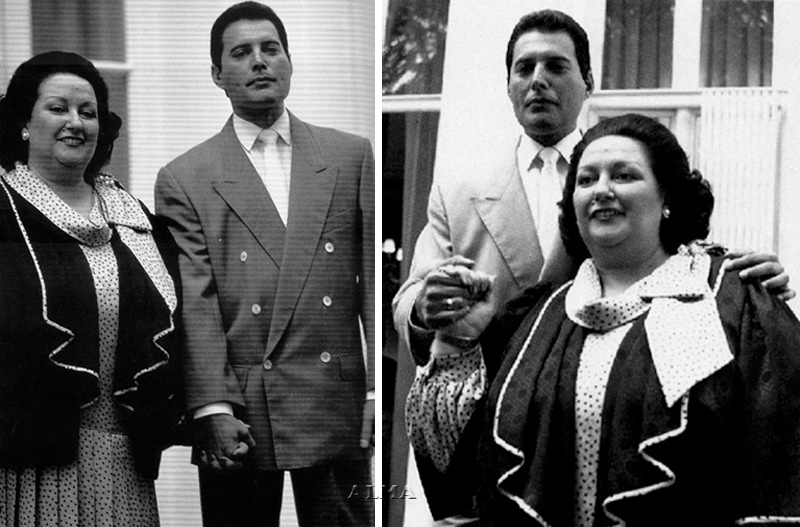
In early April 1987, Mercury and Caballe began work on a joint album. At the end of May, a music festival was held in the famous Ku Club on Ibiza Island, where Mercury and Caballe were honored guests. They performed the Barcelona song at the festival, which Freddie Mercury dedicated to his hometown of Caballe.
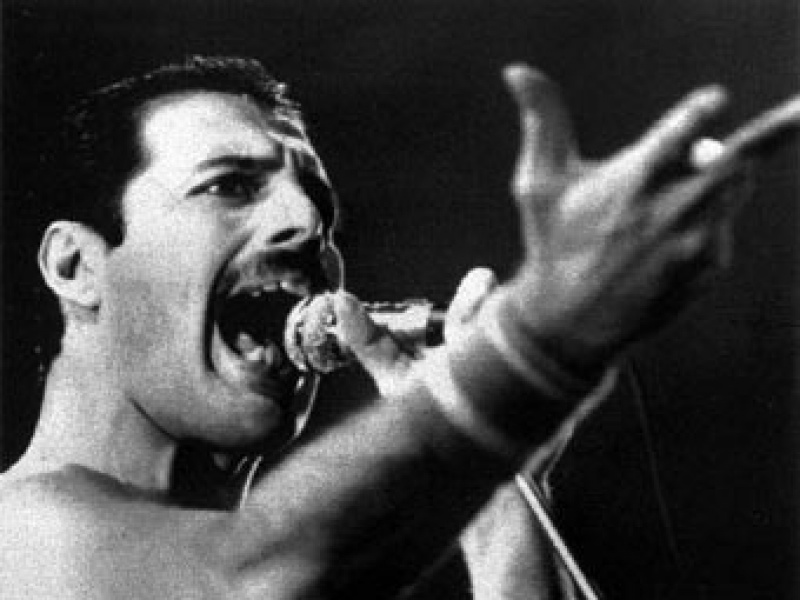
In 1986, rumors began to appear that Freddie Mercury had AIDS. Initially, information leaked to the press that he was taking an HIV test. Since 1989, serious changes began to appear in the appearance of Mercury - he lost a lot of weight. However up to last days life, the musician denied all the rumors about his health. Only his relatives knew about his terrible diagnosis.

In 1989 queen band gave the first joint interview on the radio in several years, where she announced that she wants to deviate from the usual “album-tour” scheme, and therefore she will not go on tour this time. The real reason was that the physical condition of the group's vocalist did not allow for concerts.
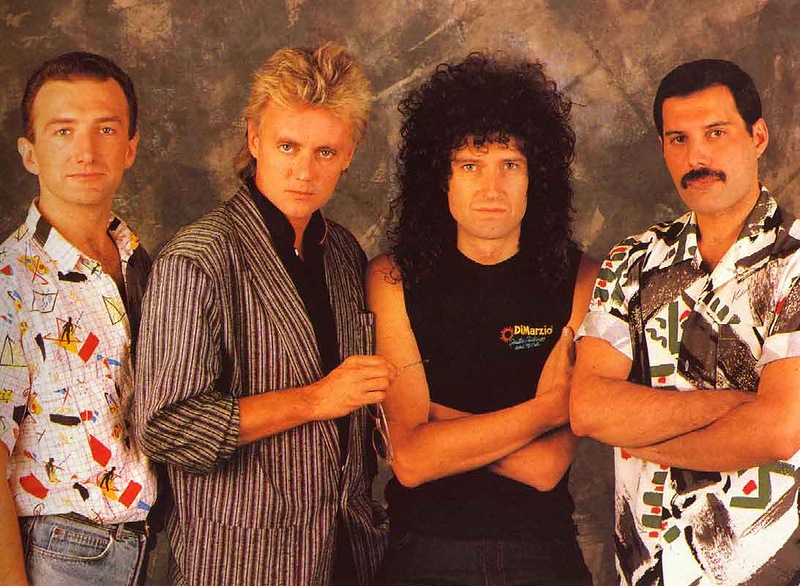
Mercury, knowing that time was running out, tried to record as many songs as possible. In the last years of his life, in addition to his solo album “Barcelona”, the musician managed to record songs for three more albums of the group. During his lifetime, two albums were released - The Miracle, which was released in 1989 and Innuendo, which was released in 1991. Also, several video clips were shot for the songs of these albums. For the last lifetime album, the clips were shot in black and white to veil the physical condition of the group's vocalist. After the death of Freddie Mercury, the remaining members of the group, using the recordings of his voice, were able to release in 1995 the last Queen Made in Heaven album.
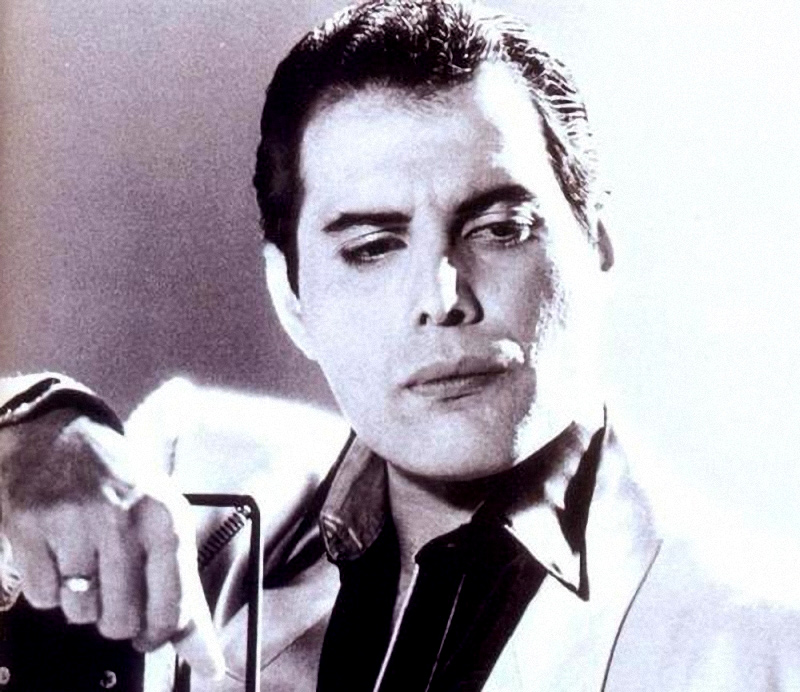
On November 23, 1991, Freddy made an official statement that he was sick with AIDS: “Given the rumors in the press for the past two weeks, I want to confirm: my blood test showed the presence of HIV. I have AIDS. I considered it necessary to keep this information a secret in order to keep calm family and friends. However, it's time to tell the truth to my friends and fans around the world. I hope everyone joins the fight against this terrible disease. ” He also ordered that all rights to the song “Bohemian Rhapsody” be transferred to the Terence Higgins Foundation, created to counter AIDS and HIV.
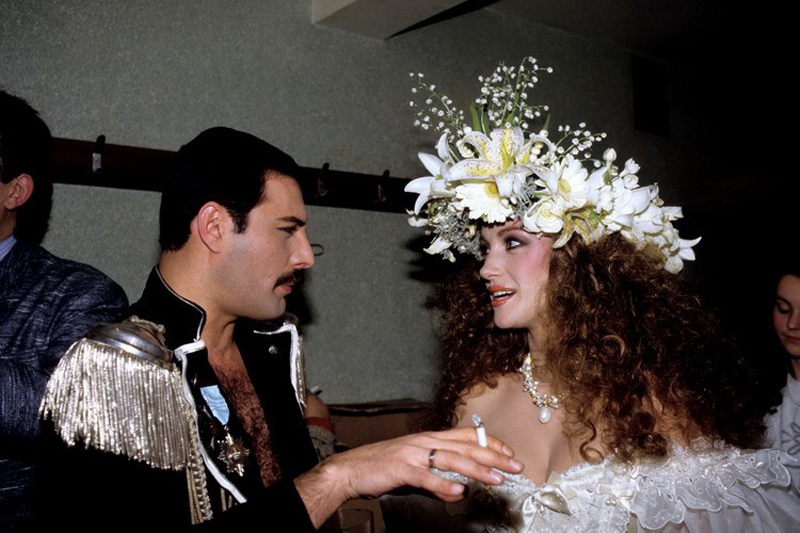
The next day, November 24, at about seven o’clock in the evening, Freddie Mercury died in his house in London from bronchial pneumonia that developed against the backdrop of AIDS, he was 45 years old. After it became known about his death, thousands of people came to the fence of his Garden Lodge house to put bouquets of flowers, postcards, letters and photographs on the paths. Fans of Mercury lost their idol, Clark lost a friend: "He was like a rare picture, which is impossible to repeat."
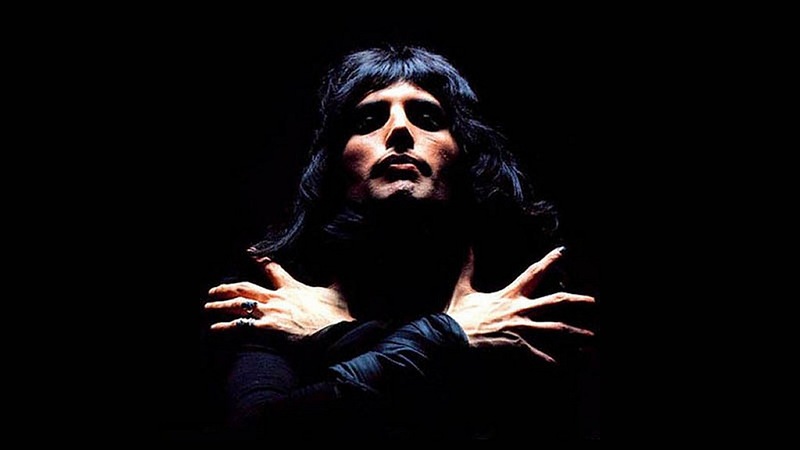
The funeral of Freddie Mercury was closed - only relatives and friends were present. Despite the fact that the musician, as an adult, no longer followed Zoroastrian beliefs, his parents professing Zoroastrianism held a funeral ceremony in accordance with their beliefs, with the exception of cremation of the body, which, according to the traditions of Zoroastrianism, is not welcome. Freddie Mercury's body was cremated. Only Mary Austin knows where the musician's ashes lie - such was his desire.
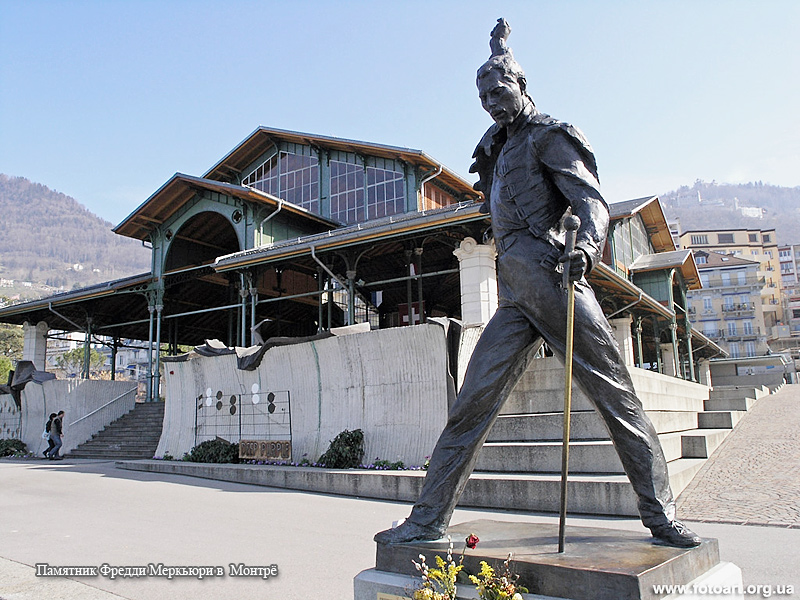
November 25, 1996, 5 years after the death of Freddie Mercury, in Montreux (Switzerland), where the musician worked and relaxed for many years, a monument was opened to him. Initially, Queen's musicians planned to erect a monument in London, and for four years they were looking for a place for him there, but they were refused. The only place the government proposed for the monument in London was the backyard of the art college where Freddie studied. Friends considered this an insult to the memory of a great musician. On June 18, 2003, another monument about 8 meters high was unveiled in London near the Dominion Theater, where the We Will Rock You show is regularly staged.
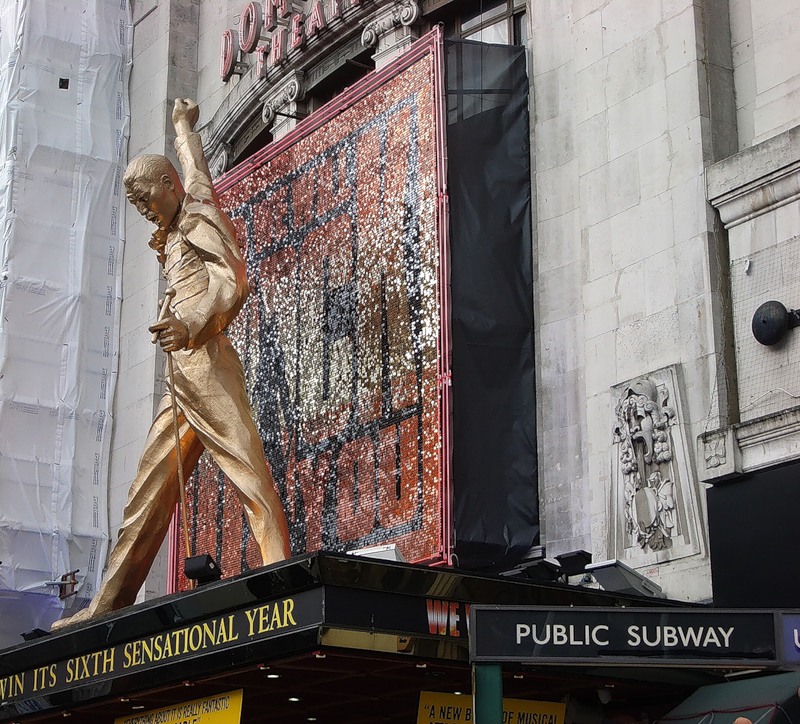
The song "Bohemian Rhapsody", which was written by Freddy, was recognized as "The Best Song of the Millennium" according to The Official Charts Company [. The second equally famous (and possibly surpassed in popularity) song of Freddy was and remains "We Are The Champions", which was in the rotation of almost all US radio stations, not to mention the fact that this song became the unofficial anthem of the winners major sporting events.
Cited
Liked: 35 users
- Born on the island of Zanzibar in a Pars family (ethno-confessional group of followers of Zoroastrianism in South Asia), Farrukh (“happy”) Bulsara studied at St. Peter's School in Panchgani (500 km from Bombay). The name “Farrukh” was uncomfortable for his predominantly English-speaking classmates, and they began to call him “Freddy”.
- In 1947, photography of the one-year-old Freddy received the title of photography of the year at a competition in his hometown.
- Freddie's father worked as a cashier at the Supreme Court of England and Wales.
- Of all the sports available at the school, Freddie preferred hockey, boxing and short-distance running. In addition, he won the title of school tennis champion at 10 years old.
- The director of the school drew attention to the music of the future singer, he organized piano courses for the boy, as a result of training at which Freddy received a fourth degree in theory and practice (Piano Grade IV).
- The first rock band Mercury (along with four school buddies) created in 1958. She was called The Hectics ("Fidgets") and performed at school events and anniversaries.
- In May 1966, Freddie entered the department of graphic illustration at Ealing College of Art in London, where he began to study in the fall. It was there that he met bassist and vocalist Tim Staffel, who invited Freddy to the rehearsals of his band;). There Mercury meets with Brian May and Roger Taylor.
- In the year Queen was founded (1970), the singer officially changed his name and surname. Now he was Frederick Mercury in his passport.
- Despite the piano lessons learned in childhood, Mercury never considered himself a good pianist. For this reason, he always felt insecure when playing keyboard parts on stage (in particular, from the first part of Bohemian Rhapsody). Later, Freddie began to use the piano less in the studio, and at concerts most of the keyboard parts were transferred to the invited musicians, which allowed the frontman to concentrate on the show.
- Freddy was fond of philately.
- The vocal range of the musician was 4 octaves.
- Although Mercury had a microwave in the house, he did not use it, because he could not.
- Contrary to rumors and some songs Queen freddy He spoke only two languages \u200b\u200b- English and his native Gujarati.
- A passionate cat lover, Mercury dedicated his solo album Mr. Bad Guy, and also loved to talk to his favorites on the phone during the tours, in which the musician was helped by his long-time girlfriend Mary Austin.
- One of the main characters of the Guilty Gear Sol series of fighting games is created under the influence of the image of Freddy.
- Mercury was afraid to correct his famous malocclusion and remove polyps on the vocal cords, as he thought it could damage voice data. Nevertheless, Freddie quit smoking only in the last years of his life.
- On the last birthday of the singer (September 5, 1991), the premiere of the film “Freddy is Dead. The Last Nightmare ”from the series“ A Nightmare on Elm Street ”.
- Energetic and open on stage, Freddie was a rather reserved person in his life and rarely gave interviews.
- The song Crazy Little Thing Called Love (the only one that Fredia played on guitar at concerts) was written by Mercury in the bathroom.
- The song from the album A Kind of Magic called Princess of the Universe became the title topic of the film and the television series Highlander.
- Freddie’s last public appearance was on October 8, 1988, when he performed Golden Boy, How Can I Go On and Barcelona in duet with Montserrat Caballe.
- The last song Freddy wrote is A Winter’s Tale. The last lifetime recordings of the singer's vocals can be heard in the song Mother Love.
- On November 25, 1996, a monument to Freddie Mercury was unveiled in Montreux, Switzerland. The opening of another one took place on June 18, 2003 in London near the Dominion Theater, where the musical We Will Rock You is regularly staged.
Origin of Freddie Mercury
Farrukh Balsara was born on the distant island of Zanzibar on 09/05/1946 in a fairly wealthy Persian family of followers of the teachings of Zoroaster. At the age of five, he moved after his family to Bombay. There he entered a boarding school, where he proved to be a capable and diligent student, was fond of drawing, sports, literature, learning to play the piano. 1987 Freddie Mercury Interview (Russian translation)Later, in 1959, the whole family moved to London, where in 1965 Farrukh entered the eminent Ealing College. There he studied design, painting, was fond of music and ballet. The idols of Mercury (under this name he became world famous) were Jimmy Hendricks and Rudolf Nureyev.
Queen Times
In 1970, Freddy, replacing his former classmate, joins the members of the youth rock band "The Smile" Roger Taylor Brian May. It was in this lineup, with the advent of bass player John Deacon in 1971, the 20-year-old stellar history of the legendary band called "Queen" began.Mercury played a leading role in shaping the entire concept of the group, including the musical one, he authored the overwhelming majority of compositions, including the lyric ballad "Love Of My Life" (both 1975), the unique "Bohemian Rhapsody", and the song "We Are The Champions "(1977), which became the anthem of sports fans.
Mercury was not limited to working in a group, recorded solo discs. The top ten hits included the single "Love Kills" (1984) and the album "Mr. Bad Guy" (1985). The fourth single, "The Great Pretender" (1987), managed to rise to fourth place. Together with Montserrat Caballe Mercury recorded the classic opera arias released on the disc "Barselona" (1988). The single "Barselona" was honored to become the anthem of the 1992 Olympics
Mercury was not only an outstanding musician, but also an outstanding actor. Thanks to this, every concert of the group turned into a real show. After all, his unique, so easily recognizable voice was complemented by a bright temperament, emotionality, and plasticity. And, of course, unusual costumes that were no less memorable than his voice. Video clips of the group were the result of Mercury's desire to combine theater and music, sound and light effects. He was the author of most scripting clips. The process of setting the clips was also usually led by Mercury. He devoted himself entirely to work.

Freddie Mercury's personal life
There are a huge number of rumors and gossip relating to the personal life of Mercury. The reason for their occurrence was so noisy parties so loved by Mercury, his drug use. Mercury rarely gave interviews, which also contributed to the appearance in the media of various dubious stories and often false gossip.In 1986, the first rumors about his infection with the immunodeficiency virus appeared. The members of the group stubbornly denied them, but the day before the death of Mercury made an official statement that he had AIDS. The terminally ill Mercury continued to work for five years. Songs that did not manage to be released during the life of Mercury were included in the album "Made in Heaven" ("Made in Heaven", 1995). One of Mercury’s death orders was the transfer of proceeds from the re-release of the song “Bohemian Rhapsody” to Terrence Higgins AIDS Charity Foundation. The cause of Mercury's death was AIDS-related pneumonia. The ancestors of Mercury professed Zoroastrianism. They were born in India and were of Parsian origin.
Freddie Mercury was a staunch supporter of the British monarchy.
In 1947, children's photography of Mercury received the title of photography of the year at a competition in his hometown.
Queen - Show Must Go OnMercury had a malocclusion caused by the presence of 4 extra teeth. Its incisors protruded slightly outward. When his career was just beginning, he wanted to correct his bite, but was afraid that this could worsen his vocal abilities. For a similar reason, he refused to remove polyps on his vocal cords. And he continued to smoke, even knowing the presence of polyps.
Mercury was fond of collecting stamps. He put together a huge collection, which is still exhibited in different parts of the world at philatelic exhibitions.
Freddie Mercury spoke only English and his native Gujarati. Many fans became interested in what languages \u200b\u200bMercury knew after the release of the songs “Teo Torriate (Let Us Cling Together)”, “Mustapha” and “Las Palabras de Amor (Words of Love)”.
At his concerts, Mercury used a microphone with an unfinished stand attached to it. This was a kind of visiting card of the singer. This habit takes his story from appearances as a member of the Wreckage band. In 1969, at Christmas, a concert was held in Widnes at the Wade Deacon School for Girls. Freddie, as usual, actively moved around the stage, spun, jumped. The heavy microphone stand frankly interfered with him, so he unscrewed its base. As a result, he received a microphone with a three-foot shaft instead of an uncomfortable stand, which no longer prevented him from moving around the stage in his usual manner.
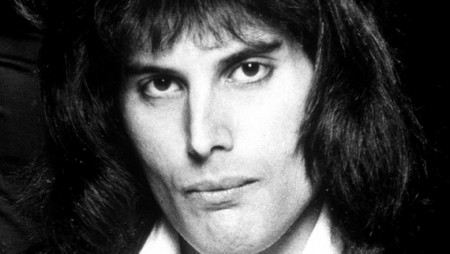
Freddie Mercury was a fan of the famous singer Jimmy Hendrix and a fan of actress Lisa Minelli.
The solo album "Mr. Bad Guy" Mercury dedicated to his cats, which he simply adored. During long trips on tour, he could talk to them on the phone for more than one hour. Portraits of all his cats were depicted on one of his vests.
Mercury had an attempt to start a collaboration with Michael Jackson. They made some test collaborative notes. The official reason that the collaboration did not take place was the busyness of the musicians.
Biography added: April 1, 2014
Freddie Mercury (born Freddie Mercury, real name Farrukh Bulsara; September 5, 1946, Zanzibar - November 24, 1991, London, UK) - singer and musician of Pars origin, vocalist of the rock band Queen. He was distinguished by a high powerful peculiar voice, a characteristic bright manner of speaking. According to a survey of British listeners recognized as one of the best rock singers of the XX century.
Freddie Mercury (real name Farrukh Bulsara) was born on September 5, 1946 on the island of Zanzibar in the family of the Parsi Bomi and Jer Bulsar. At birth, the boy received the name "Farrukh", which means "happy."
Mercury Freddy
Farrukh's father worked as a cashier at the Supreme Court of England and Wales. In 1952, Freddy had a sister in Kashmir.
In 1954, parents assigned Farrukh to St. Peter's School in Panchgani, 500 kilometers from Bombay. There, Freddie began to live with his grandfather and aunt. The name Farrukh was inconvenient for pronunciation by classmates (mostly English speakers), so friends began to call him Freddy.
All sports at St. Peter's School were typically British. Freddie did not like cricket and long-distance running, he preferred hockey, sprint and boxing.
We were not allowed into Russia. They think that we will corrupt their youth ...
Mercury Freddy
At the age of ten he became the champion of the school in table tennis, at the age of twelve he received the trophy for winning the youth all-around, as well as the certificate "for excellence in all sciences and arts."
Freddie studied well, showed interest in music and painting, constantly did drawings for friends and relatives. He also sang in the school choir and participated in productions of performances.
From an early age, Freddie was fond of music. Singing occupied almost all his free time, sometimes to the detriment of his studies. The musical abilities of Freddy drew the attention of the director of the school of St. Peter.
Now I know that for money in Brazil you can buy anything. Even Brazil itself, or the entire continent. With my money, I could very well have become president there.
Mercury Freddy
He wrote a letter to the boy’s parents, in which he suggested organizing piano courses for Freddy for a small fee. Parents agreed, and Freddy began to study with enthusiasm. At the end of his studies, he received a fourth degree in theory and practice (English Piano Grade IV).
In 1958, five friends from St. Peter's School - Freddie Bulsar, Derrick Branche, Bruce Murray, Farang Irani and Victor Rana created their first rock band, which they called The Hectics (Russian. "Fidgets"). The group played at school evenings, dances and anniversaries.
In 1962, sixteen-year-old Freddy graduated from St. Peter's School in Mazagon, and returned to Zanzibar. In early 1964, the British government transferred Zanzibar to the Arab Sultan, and a week after that Zanzibar was declared an independent state. Due to political unrest in the country, the Bulsar family, having captured only two suitcases with clothes, flew to the UK.
I have no desire to live up to 70 years: this is probably a very boring task.
Mercury Freddy
Arriving in England, the Bulsar family first stayed with relatives living in Faltham, Middlesex County, then they bought their own home. Freddie, who at that time was seventeen years old, entered the Islesworth Polytechnic School, where he was mainly engaged in painting, as he wanted to go to art college.
The family had problems with money, so during the holidays Freddie had to earn extra money. At first, he worked in the logistics department of Heathrow Airport in London, then as a loader at Faltham's warehouse.
His colleagues drew attention to his "graceful" hands that did not fit this work. Freddie answered their questions that he is a musician and works as a loader only in his spare time. Thanks to the charm of Freddy, other movers began to take on the lion's share of his work.
People who meet me think that I’ll kill them now. But in fact, I am very shy.
Mercury Freddy
In May 1966, graduating from Islesworth with a high mark in painting, Freddy was interviewed at Ealing College of Art in London, where he began to study at the Department of Graphic Illustration in the fall of that year.
Soon after, Freddie left his parental home and settled in a rented apartment in Kensington with his friend Chris Smith. Kensington in those years was the heart of London's bohemia and art.
Freddie drew a lot, a special place in his drawings was occupied by his idol - guitarist Jimi Hendrix. In Ealing, Freddie met and made friends with Tim Staffel, vocalist, bass player and leader of the Smile band (Smile).
How boring it is to simply exist, to have only one side of the character, which is reflected in everything that you do. I am a man of opposites and change every day, like a chameleon, and every new day of mine is different from the previous one, and I look forward to it. I do not want to be the same.
Mercury Freddy
After some time, Tim began to invite Freddy to the rehearsals of the group. Freddy appreciated the potential of Smile, especially the play of guitarist Brian May and drummer Roger Taylor. Freddie also met other young beginner musicians such as Tim and Nigel Fosters. Chris Smith, his flatmate, was also into music. Freddy and Chris played together, trying to mix different styles, but did not go on stage.
In the summer of 1969, twenty-three-year-old Freddie graduated from Ealing with a diploma in graphic design. Soon, Freddy moved to Roger Taylor, and they opened a store in the Kensington market, where they sold both Freddy's paintings and other goods.
On August 13, Freddy met with the Liverpool band Ibex. The group included guitarist Mike Berzin, bass player John Taylor nicknamed Tapp, drummer Mick Smith nicknamed Miffer (from the English miff - “get angry”, “spoil the mood”) and another bass player Jeff Higgins, replacing Tapp, when he played the flute.
You can’t buy happiness. But money can help him find it!
Mercury Freddy
With them was their manager Ken Testy. Ten days after the meeting, Freddie already knew the entire repertoire of the group, added some of his songs and went with them to their first joint concert, in Bolton, Lancashire.
Their concerts were held as part of the annual blues festival, so the events were covered by the press. Ibex concerts took place on August 23 at the Oktogon Theater and on August 25 at the Royal Park. Ibex performed cover versions of songs by Cream, Jimmy Hendrix, Led Zeppelin, Freddie’s favorites.
In September-October 1969, at the suggestion of Freddy, the group was renamed Wreckage ("Shipwreck"), and Freddy went to the trick to convince everyone to change the name of the group.
In fact, my kind of loneliness is the hardest to survive. Loneliness does not mean that you are locked alone in your room. You can be in a public place and still feel that you are the most lonely person, because you really do not belong to anyone.
Mercury Freddy
After a short time, Miffer left the group, and Richard Thompson, the ex-drummer of the band 1984, in which Brian May played before Smile, took his place. After renaming Wreckage, they gave a few concerts, but soon, largely due to the fact that Mike Berzin returned to Liverpool to study, the group broke up.
Freddy decided to find a new group. Among the ads in Melody Maker, he found a vocalist job in the Sour Milk Sea ("Sour Milk Sea") band. Freddy came to the audition, and on the same day was received, as other participants liked his voice and his manner of moving.
The group included vocalist and guitarist Chris Chesney, bassist Paul Milne, rhythm guitarist Jeremy Gallop, nicknamed Rabber, and drummer Rob Tyrell. After several rehearsals, the group gave a couple of concerts in Oxford, Chris's hometown.
I only care about rattling my skeleton across the stage!
Mercury Freddy
Freddy and Chris became friends, and soon Chris moved to the apartment where Freddie and the musicians from Smile lived. The rest of the Sour Milk Sea members did not like their friendship, they argued this antipathy concern for the future of the group. As a result, two months later, Jeremy took almost all the equipment (since it belonged to him), and the Sour Milk Sea ended on this.
In April 1970, Tim Staffel decided to leave Smile, and Freddie took the place of the vocalist in their group. At his initiative, the group was renamed Queen.
Until February 1971, the group did not have a permanent bass player - in less than a year Queen replaced three people. Finally, at one of the music parties, they met John Deacon, whose abilities best arranged the group professionally. After that, Queen formed in the final composition.
I do not want to become any star there, I will become a legend.
Mercury Freddy
After the composition of the group became permanent, Freddy decided to make her coat of arms. The emblem of Great Britain was taken as a basis, in which the zodiac signs of the Queen members were “woven”: two fairies - the sign of Virgo, under which Mercury himself was born, two Leo - John Deacon and Roger Taylor, and crab - the sign of Cancer - Brian May. Above all the figures rises a griffin, depicted in the style of British heraldry (English) with wings with spikes, symbolizing power over heaven and earth.
In 1972, while recording Queen's debut album Queen, Freddie decided to change his surname Bulsar to the creative pseudonym Mercury (Eng. Mercury).
He used this name in his song “My Fairy King” (Russian: My Fairy King), in which there are lines: “Mother Mercury, look what they've done to me, I cannot run I cannot hide” (Russian. Mother Mercury , look what they did to me, I can’t run, I can’t hide).
I do not want to change the world, for me the main thing is happiness. If I am happy, this is reflected in my work. No apologies will help ... then. I have a feeling that I was myself and that is the main thing - to have happiness and joy in life. Everyone should strive for this as much as possible, as much as possible. But, of course, who will succeed ...
Mercury Freddy
In parallel with the work on Queen's first album, Freddy took part in the Trident Studios project under the pseudonym Larry Lurex, performing cover versions of the songs I Can Hear Music and Going Back (Brian May and Roger Taylor were involved in this project on the initiative of Freddie Mercury).
Freddy became the author of the first Queen song to hit the UK charts - Seven Seas Of Rhye (1973). He also wrote the band's first hit, Killer Queen (1974), as well as Queen's most successful work, Bohemian Rhapsody.
The song was predicted to fail due to its huge length for those times (5:55) and the mixing of several styles and genres of music. But Queen released the song as a single, shot a video clip for it, which is the first "real" video clip in history. The song lasted 9 weeks at the top of the British charts.
In 1975, Queen toured in Japan. The musicians were extremely surprised by the warm welcome of the Japanese fans of the group. Brian May recalled: “We had some success in England and the USA, but we had never seen such fanaticism and adoration before.
Suddenly in Japan we began to feel like real stars such as the Beatles and The Bay City Rollers, people greeted us with cries of delight, which was news to us. ” Freddie fell in love with Japan and became a fanatical collector of Japanese art.
On October 7, 1979, Freddie’s old dream came true - he performed with the Royal Ballet. For his performance, he chose the songs Bohemian Rhapsody and Crazy Little Thing Called Love.
In 1980, Freddie changed his image - he cut his hair short and grew a mustache.
At the end of 1982, the Queen group announced that in 1983 there would be no tour, the group went on vacation. Freddie Mercury has long pondered the idea of \u200b\u200breleasing a solo album and now there is an opportunity for this.
In early 1983, he began recordings at the Musicland Studios in Munich. At this time, he met with composer Giorgio Moroder, who participated in the restoration project of Fritz Lang's silent science fiction film Metropolis, shot in 1926. Moroder was involved as a composer to create the design of the film with music in a modern style.
He invited Freddie Mercury to take part in this project. The result of the joint work of Mercury and Moroder was the song "Love Kills", released on September 10, 1984.
At the end of May 1983, Freddie Mercury visited Verdi’s opera Masquerade Ball. Here he first saw and heard the outstanding Spanish opera singer Montserrat Caballe. The extraordinary beauty and strength of her voice made a huge impression on him.
The first single of Mercury’s future solo album Bad Guy became the song “I Was Born To Love You”, released on April 9, 1985. The album was released three weeks later by CBS Records. Subsequently, one of the songs of this album “Made In Heaven” was included in the eponymous album released by Queen in 1995.
February 23, 1987 Freddie Mercury released the single "The Great Pretender" (cover version of the song the band Platters recorded at Townhouse Studios). He also recorded two songs for the 1986 musical Time, the eponymous Time and In My Defense.
In March 1987, Freddie Mercury met with Montserrat Caballe in Barcelona and presented her with a cassette with several of his new songs. These songs made a strong impression on Caballe, and she even performed one of them at a concert in London, in Covent Garden, to the surprise of Freddie Mercury.
In early April 1987, Mercury and Caballe began work on a joint album. At the end of May, a music festival was held in the famous Ku Club on the island of Ibiza, where Mercury and Caballe were honored guests. They performed the Barcelona song at the festival, which Freddie Mercury dedicated to his hometown of Caballe.
On October 8, 1988, at the La Nit festival in Barcelona, \u200b\u200bthe second joint performance of a rock musician and an opera diva took place - they performed three songs: Golden Boy, How Can I Go On and Barcelona. The co-author of these songs, Mike Moran, performed the piano parts for these songs. This performance was the last appearance of Freddie Mercury before the public. By this time, the musician was already seriously ill with AIDS.
The album "Barcelona" was released on October 10, 1988. The title track of the album, “Barcelona”, became one of the two anthems of the 1992 Summer Olympics in Barcelona (the second was the song “Amigos Para Siempre” by Andrew Lloyd Webber and Don Black performed by Sarah Brightman and Jose Carreras).
Since 1986, rumors began to appear that Freddie Mercury had AIDS. Initially, information leaked to the press that he was taking an HIV test. Since 1989, serious changes began to appear in the appearance of Mercury - he lost a lot of weight. However, until the last days of his life, the musician denied all the rumors about his health. Only his relatives knew about his terrible diagnosis.
In 1989, the Queen group gave the first joint interview on the radio in several years, where it announced that it wants to deviate from the usual “album-tour” scheme, and therefore this time it will not go on tour. The real reason was that the physical condition of the group's vocalist did not allow for concerts.
Mercury, knowing that time was running out, tried to record as many songs as possible. In the last years of his life, in addition to his solo album “Barcelona”, the musician managed to record songs for three more albums of the group.
During his lifetime, two albums were released - The Miracle, which was released in 1989 and Innuendo, which was released in 1991. Also, several video clips were shot for the songs of these albums.
For the last lifetime album, the clips were shot in black and white to veil the physical condition of the vocalist of the group. After the death of Freddie Mercury, the remaining members of the group, using the recordings of his voice, were able to release in 1995 the last Queen Made in Heaven album.
On November 23, 1991, Freddy made an official statement that he was sick with AIDS: “Given the rumors in the press for the past two weeks, I want to confirm: my blood test showed the presence of HIV. I have AIDS. I considered it necessary to keep this information a secret in order to keep calm family and friends. However, it's time to tell the truth to my friends and fans around the world.
I hope everyone joins the fight against this terrible disease. ” He also ordered that all rights to the song “Bohemian Rhapsody” be transferred to the Terence Higgins Foundation, created to counter AIDS and HIV.
The next day, November 24, at about seven o’clock in the evening, Freddie Mercury died in his house in London from bronchial pneumonia that developed against the backdrop of AIDS. After it became known about his death, thousands of people came to the fence of his Garden Lodge house to put bouquets of flowers, postcards, letters and photographs on the paths.
The funeral of Freddie Mercury was closed - only relatives and friends were present. Despite the fact that the musician, as an adult, no longer followed Zoroastrian beliefs, his parents professing Zoroastrianism held a funeral ceremony in accordance with their beliefs, with the exception of cremation of the body, which, according to the traditions of Zoroastrianism, is not welcome. Peter Freestone, personal assistant to Freddie Mercury, described the ceremony as follows:
Freddie’s coffin was transferred to the chapel to the sound of Aretha Franklin’s song You’ve Got A Friend. The subsequent Zoroastrian rite was a continuation of the ceremony, which began at half past eight in the morning.
Two Parsa priests, dressed in white, escorted her to the memorial chapel of the John Nods and Sons funeral parlor in Ladbow Grove. At the end of the service, Freddie’s body left the world accompanied by the voices of Montserrat Caballe, who performed the aria D’Amor Sull ’Ali Rosee from Verdi’s opera Troubadour. Freddie never wanted to be like everyone else - such an adieu was just in his spirit, and Freddie would have approved of him.
Freddie Mercury's body was cremated, only Mary Austin knows where the musician's ashes lie - that was his desire.
In his will, Freddie Mercury left most of his fortune, including his mansion and income from the sale of his records, to Mary Austin, as well as to his parents and sister.
In addition, 500 thousand pounds were bequeathed to his chef Joe Fanelli, personal assistant Peter Freestone, 100 thousand pounds to his personal chauffeur Terry Giddings and 500 thousand pounds to Jim Hatton].
Freddie Mercury is still one of the most popular performers in the world. His incredible scenic images and manner of acting on stage are known even to people far from music.
On April 20, 1992, the remaining Queen band members Brian May, Roger Taylor and John Deacon, along with many world pop and rock stars, gave a concert at Freddy's Wembley Stadium, which earned £ 19.4 million in funds the fight against AIDS.
The broadcast of this concert was seen by more than 1 billion people around the world. On November 6, 1995, the Made In Heaven album was released with recordings made during spring sessions at Dreamrend Montreux in 1991.
The name Freddie Mercury has become a kind of brand in music, synonymous with rock of the 80s. Many modern singers take Freddie as a model, but still no one has achieved the same success that Freddie Mercury and Queen could achieve in 20 years of collaboration.
The video for the song “Bohemian Rhapsody”, which was written by Freddy, was the first video in the history of show business, and the song itself reached the status of “Best Song of the Millennium”.
The second equally famous (and possibly surpassed in popularity) song of Freddy was and remains "We Are The Champions", which was in the rotation of almost all US radio stations, not to mention the fact that this song became the unofficial anthem of the winners major sporting events. It is her thicket that you can hear from fans. Recently, the song was called the most recognizable in the world.
At the end of 1969, Freddie Mercury met thanks to Brown May with Mary Austin, with whom he lived for about six years in West Kensington. But then they broke up.
Once, everything changed when Freddy admitted that he had to tell her something very important; something that will change their relationship forever. Mary explains: “I was a little naive, and it took me a while to realize the truth. In the end, he was glad that he told me that he was bisexual. " Mary decided it was time to leave, but he convinced her not to go far.
They remained close friends, Mercury made her his personal secretary, and often admitted that Mary was his only true friend. In an interview in 1985, Mercury said: “All my lovers ask me why they cannot replace me with Mary. But that is simply not possible. She is my only friend, and I do not need anyone else. She was actually my wife. We believe in each other and that’s enough for me. ”
The singer dedicated several songs to Mary, of which the most significant is the song “Love of my life”. Mercury was the godfather of Mary's eldest son, Richard, and left her mansion after her death.
Freddie Mercury had a short relationship with the famous Austrian actress Barbara Valentin, whom he met in 1983. Mercury spoke of their relationship: “Barbara and I created an alliance that was stronger than with any of my lovers over the past six years.
I really could tell her everything and be with her myself, which happens to me very rarely. " The musician also mentioned her among others in the dedication of his solo album “Mr. Bad Guy ":" thanks for the great tits and bad behavior. "
From the very beginning of his popularity, the image of Freddie Mercury raised a lot of questions about his orientation, but Mercury always avoided talking about his personal life, joked, or answered vaguely.
In a 1984 interview with the Canadian magazine Music Express, he said: You are likely to ask me about the story with the Sun newspaper, according to which I am supposedly gay. As for me, I fuck who I want and when I want. Newspapers have always written about Queen what they like - in the end, it's their job! From this I will not suffer from insomnia. But this article was an absolute lie, the information was taken absolutely from the air. What can I do against it? What can I do, tear my hair out and say: “Oh my God, I have to fix it by all means!”? The woman who wrote this article wanted a flashy story from me, but she didn’t. I asked her: “What do you want to hear? What am I selling cocaine or what? ”Then she took it and simply wrote that I admitted that I was blue. I’m not hit with a bag to say that! For this, I will have enough mind. They always tried to put me in the same box with gays. At first it was presented like this: I am bisexual; then they talked about the appearance of the hermaphrodite, in addition, I did not resist some gossip, because they contributed to catchy headlines. If you are hinting at my sexual preferences: very simple - I do this with the one I love. And no hidden bottom. My personal life does not concern anyone. I can talk about almost everything, but the last thing I would do in life would come to Sun and say: "I confess, I confess that I'm blue." This makes no sense. Otherwise, I would have done it many years ago. In this business (show business), it’s good to be blue or someone else unprecedented if you are new. If I speak to the public now, people can say: “Oh God, now Freddy suddenly admits that he is blue, because right now it’s fashionable to be blue.” It doesn't suit me. Such things I leave to those who need them. The only thing that matters to me is music.
It is curious that in an interview to the question of whether the song I Want To Break Free is dedicated to sexual minorities (in the video, the group appeared as female characters of the popular soap opera in the UK), Freddy replied: The funny thing is that everyone thinks that it was my idea, because people think ... But it is not. Something like this was in my subconscious, but if I expressed this idea to the rest of the group, they would not agree with it, because it would look like I was trying to dress them all as homosexuals, and everyone thought that I was trying to use situation or something like that. The funny thing is that it was the rest of the band members who came to me with this idea ... But in fact, I was shocked by the fact that they were really going to change into women's dresses.
However, Mercury once admitted: “I had more lovers than Liz Taylor, of both sexes, but my connections did not end there. As if I devour people and destroy them. ”
After the death of the musician, information resources continued to discuss the topic of Mercury orientation. The press claims that Freddie was gay were based, in particular, on interviews with people who personally knew Mercury.
Brian May and Roger Taylor gave an interview a week after Freddy’s death, in which Brian May said: “He was gay and didn’t really hide it” (He was gay and he was quite public about it), and at a concert in memory of Mercury, last spring of 1992, George Michael mentioned open singer bisexuality.
The book of Mercury’s personal assistant, Peter Freestone, described the singer’s relationship with several men. Jim Hatton also wrote the book Mercury and Me about his relationship with Freddy, which lasted the last six years of the singer's life.
Some posthumous biographies of the musician were filled with speculation on the topic of his sex life, for example, in the book of the music editor of the newspaper Daily Mirror (English) Rick Skye (the first book about Mercury, published after his death), the singer’s personal life was shown in an absurd form .
Interesting Facts
Freddie's friends were such famous people as Montserrat Caballe, Tim Rice, Rod Stewart, Elton John, Dave Clark and many others.
Freddie worked with Michael Jackson, making 4 demos with him: 2 versions of “There Must Be More to Life Than This” (one is sung in a duet, the other is by Michael Jackson with a few small phrases by Freddy on back vocals, later the composition was released on solo Freddie Mercury’s album Mr. Bad Guy), State of Shock (later released by The Jacksons on Victory) and Victory (details of this record are not known). However, for unknown reasons, the collaboration did not take place. Officially it was said about the employment of both musicians.
After the songs Teo Torriate (Let Us Cling Together), Mustapha and Las Palabras De Amor (Words Of Love) appeared, many were interested in how many languages \u200b\u200bFreddy knew. In fact, in addition to English, Freddie spoke only in his native Gujarati.
At all Queen concerts, Freddie used a microphone with an unfinished stand attached to it. This distinctive sign, which became the singer’s calling card, was formed during his first performances in England as part of the Wreckage band. At a concert that took place on Christmas Day 1969 at the Wade Deacon School for Girls in Widnes, Freddy hopped and spun around the stage as usual. He was tired of the heavy microphone stand - he unscrewed the base from it and "after that he jumped around the stage in his familiar manner, clutching the" extra "three-foot rod attached to the microphone in his hand."
The image of Freddy formed the basis for the design of Saul, one of the main characters in the Guilty Gear series of games.
“A Winter’s Tale” is the last song written by Mercury, and “Mother Love” is the last song he recorded. He could not finish the recording, so the last verse is performed by Brian May.
Freddie Mercury was a keen philatelist as a child. His collection was exhibited at philatelic exhibitions in different countries.
Freddy decided not to correct his famous malocclusion. At the beginning of his career, Freddie said that he would like to correct his teeth, but regretted that he did not have time for this because of fear that this could damage his vocal abilities. For the same reason, he refused to remove polyps on the vocal cords. Despite this, Freddy was a smoker.
Freddie Mercury was very fond of cats; in his mansion, several cats usually lived at different times: Oscar, Tiffany, Goliath, Delaila, Miko, Romeo, Lily. He dedicated a song to his cat Delilah.
Videography
VHS editions
1. “The Video EP” (released July 21, 1986)
2. "The Great Pretender" (release March 16, 1987 only in the UK)
3. “The Barcelona EP” (released on February 6, 1989)
4. “The Video Collection” (the release was released on November 6, 2000)
DVD editions
1. “The Video Collection” (released October 23, 2000)
2. “Lover of Life Singer of Songs” (released September 4, 2006)
3. “Lover of Life Singer of Songs (Collectors Edition 2CD + 2DVD)” (released November 20, 2006) - Discography
1. “Mr. Bad Guy "(the album was released on April 29, 1985)
2. "Barcelona" (the album was released on October 10, 1988)
3. "The Freddie Mercury Album" (the album was released on November 17, 1992)
4. “The Great Pretender” (the album was released on November 24, 1992 only in the USA)
5. "Freddie Mercury - Remixes" (the album was released on November 1, 1993 only in Bolivia, Brazil, Italy, the Netherlands and Japan)
6. “The Solo Collection” (boxing set was released on October 23, 2000 in the UK, Europe and Japan)
7. “Solo” (the album was released in 2000)
8. “Lover of Life, Singer of Songs - The Very Best of Freddie Mercury Solo” (the album was released on September 4, 2006).
1974 - I Can Hear Music
1984 - Love Kills
1985 - I Was Born to Love You
1985 - Made In Heaven
1985 - Living On My Own
1985 - Love Me Like There’s No Tomorrow
1987 - The Great Pretender
1987 - Barcelona (with M. Caballe)
1988 - The Golden Boy (with M. Caballe)
1988 - How Can I Go On (with M. Caballe)
Posthumously published (optional):
1992 - Barcelona (with M. Caballe)
1992 - How Can I Go On (with M. Caballe)
1992 - In My Defense
1993 - The Great Pretender
1993 - Living On My Own (`No More Brothers Remix`)
2006 - Love Kills (series of remixes released for the 60th anniversary)
Freddie Mercury - photo
Freddie Mercury - quotes
Want to interview me? Oh, don't do stupid things!
I never delve into myself, I cannot stand such things, I don’t even like to be read on my arm. There were times when they said to me: "Be sure to go to such and such - he accurately predicts great." But to be honest, it scares me. I want to know everything myself. It would be very boring to know what should happen to me, because then I would spend my whole life trying to avoid this.
Many of those whom the media represent as very strong are actually not at all like that. Sometimes the strongest can fall overnight. It's like blowing a balloon: then one needle is enough and - psh! You have to be very careful.
Many found and lost love, many fall in love and are disappointed in love, so I continue to write songs about this - about different manifestations of love. It seems to me that love and lack of love are eternal topics, and people experience love and separation in different ways. I think most of my songs are about this, and, in my opinion, you can really endlessly sing and compose love songs. I write about things that people experience daily.
Sometimes it seems to me that in life there should be something more than crazy jumps around the world.
“If tomorrow I die, I don’t give a damn - I managed to do everything ...” - said Queen soloist Freddie Mercury, at the height of her fame. Then no one knew that the rock star would really leave too soon, and AIDS would be the cause.
“If tomorrow I die, I don’t give a damn - I managed to do everything ...” - said Queen soloist Freddie Mercury, at the height of her fame. Then no one knew that the rock star would really leave too soon, and the reason would be.
Farukh Balsara, or, as his English friends called him from childhood, Freddie, was always fond of music. And he became a musician just like hundreds and thousands of teenagers: at college he made friends with Tim Staffel, who sang in the Smile group, and when he left the project, he came to his place. Only in this case, not an ordinary teenage group was born, but one of the greatest rock bands in history.
It was Freddie who proposed renaming the group to Queen, he himself took the pseudonym Mercury. And a glorious story began, familiar to any fan: climbing, concerts, albums, fame ...
WOMEN HIS DREAMS
The private life of stars is a stormy thing. And the case of Mercury was no exception, although it all began quietly and normally. In 1970, Freddy met the blue-eyed blonde Mary Austin. For 7 years they live in a civil marriage. Mary even thinks about the baby, but ...
Queen has already become a cult band, almost all the time Freddy is on tour. During the tour, he not only does not keep marital fidelity, but also in full shows unconventional orientation. Mary and Freddy decided to break up, although they remained good friends.
Mercury lived to the fullest - an endless merry-go-round of lovers, crazy parties, extravagant antics, generous gifts to friends ... But these were not the whims of a satiated debaucher, but manifestations of a mad thirst for life, the desire for complete freedom - and the fear of loneliness, the unquenchable emotional anguish, so characteristic extraordinary people.
In 1984, information appeared in the newspapers about "Patient No. 0," from which the triumphal procession on the planet began. There are suggestions that it was with this man that Freddie met during the tour. But then Mercury felt great, and this kind of newspaper reports did not interest him at all.
At the same time, in one of the gay clubs, he met with German actress Barbara Valentine (she was also called German Bridget Bardot). This acquaintance grew into a strong affection: Barbara lives for a long time in the house of Freddy. “Barbara and I had such a vivid relationship that I have not had in the last six years. I can talk to her about everything and still be myself. This happens to me very rarely ... ”He really remained himself: he composed music, performed songs, invested his whole being in them, and shot clips. Barbara Valentine also participated in the video “It’s a hard life,” which welcomed his many friends in bed with Freddy.
|
The Secret Life of the Scary Virus “It is impossible to become infected with AIDS - they are infected with the human immunodeficiency virus (HIV), which, when it enters the bloodstream, begins destructive work. At first, it does not manifest itself, and only after some time (from several weeks to a year, most often after 3 months) can an acute HIV infection occur. Symptoms are similar to the signs of many other diseases: fever, sore throat, abdominal pain, nausea, swollen lymph nodes ... This period lasts from several days to a month and a half - the longer and harder it is, the worse the prognosis for the future. Then, health is normalized, and HIV infection passes into the latent stage, which lasts from 3 to 15 years. A person feels completely healthy, but the virus destroys the cells of the immune system, not all in a row, but only certain ones - CD4 lymphocytes. When their number decreases to a critical level, immunodeficiency symptoms can develop: oral candidiasis, an incomprehensible fever, sudden weight loss, frequent acute respiratory infections and herpes. If from this moment the patient does not receive specific treatment, the infection continues to develop and eventually the last stage begins - AIDS itself. |
SHOW MUST GO ON
In 1987, Mercury will say in an interview: “I lived for sex. You can go crazy how AIDS information influenced me. I began to think completely differently. I was terribly messy in my connections, and now I have become almost a monk. I would advise every libertine to take an HIV test. I’m all right with this, thank God ... "
The musician jinxed it: very soon it became clear that this was not so. By this time, Freddie had really dramatically changed his lifestyle, his house was no longer teeming with casual acquaintances. He immersed himself in creativity, catching up with wasted time.
October 8, 1988 Freddie performs with the opera diva Montserrat Caballe. "Barcelona ..." A duet that shocked and delighted the world ... And how did this rocker get here? And he insanely wanted to try himself in something else, breathe in everything that his favorite music could reveal to him. He wanted to do more than was expected of him, because he was breathtaking from the painful feeling that time was short, much less than the amazed and enthusiastic audience could have expected ...
That was his last appearance on stage. No one knew that the singer was sick with the recently appeared mysterious incurable disease. A complete surprise for the fans was the cancellation of all Queen concerts. However, in official releases it was said that members of the group are working on solo projects - this has happened before.
Surprisingly, Freddy did not tell anyone about his illness.
The other three Queen members could only guess. When in 1991, after a long break, they gathered to shoot the clip “I” m Going Slightly Mad, everyone was amazed at how much Freddy had lost weight. There was talk again that Mercury was not doing well. ominous spots distinctly appeared on his face, reminiscent of large bruises - a sure sign of a mysterious disease.
Officially, it was still claimed that the Queen soloist had knee problems (the version did not stand up to criticism - in one of the episodes of the video, Freddie got up on his “sore” knee).
All the works of Mercury, and his whole life were fantastic fireworks, a grandiose bright performance, and he always brilliantly played his part. One of Queen’s latest songs, released a month before Freddy’s death and instantly became the generation’s anthem, is “The Show Must Go On” (“The Show Must Go On”). In her words “Soon it will be time for me to give way ... My heart is breaking apart, but I still smile” Freddie’s friends and enemies did not accidentally look for a secret meaning.
IT WAS HIS CHOICE
On November 6, 1991, Queen's musicians announced the will of their fading lead singer: to reissue the super popular single “Bohemian Rhapsody” and transfer all proceeds from the sale of the record to AIDS charity funds in England and America.
Three weeks later, on November 23, a spokeswoman for Mercury made an official statement on behalf of the artist: “Yes, I found a positive reaction to HIV. I have AIDS. I still kept this information secret so as not to harm my loved ones, but now it's time to talk about it. I hope that my fans around the world will support me, my doctors and everyone who is struggling with this terrible disease. None of my friends and fans have yet known about this, and I ask you to understand me correctly: I did not want my personal life to become a subject of discussion. I will continue to pursue such a policy. ”
There was no need to “continue”: the next day, Freddy died of severe pneumonia, with which the body, exhausted by the virus, could not fight. He was 45 years old. A great artist and a great lover, he lived as if he was burning a candle from two sides - and now the candle went out forever. His favorites, Persian cats, silently jumped from a luxurious bed, which, according to Freddie, could accommodate six people ... The doctor and his closest friends, who were all near him lately, left the room. Faithful Mary Austin, who faithfully looked after him, sobbing, kissed her beloved. The curtain fell.
But the show went on. Four days later, a funeral took place, the script of which Freddy himself wrote for several weeks, connecting the world of rock music with the world of the Zoroastrian religion of his Iranian ancestors ...
After the funeral, the remaining members of the group received reproaches: they say that Freddie had to act like Magic Johnson and use his stellar status in the fight against AIDS. Queen guitarist Brian May replied that this was Freddie’s choice and no one could tell him.
|
MYTHS ABOUT AIDS Myth 1. The diagnosis of HIV is death sentence.Only a small percentage of people with HIV develop AIDS. But even if a person was not just a carrier of the virus, today he can already be helped. There is no cure for HIV yet, but already in 1996 in the West and a year later in Russia, highly active antiretroviral therapy (HAART) began to be used. The drugs inhibit the reproduction of the virus and reduce its content in the blood to almost zero. A person lives, feels normal, works, raises children. The effectiveness of such treatment is 90%, provided that patients strictly adhere to the rules for taking medication without missing a single pill. Myth 2. A child of HIV-infected parents will certainly be sick.Even if a man has a virus in his blood, he will not pass it on to the child. Alas, he can infect the expectant mother. But modern therapy allows you to cleanse blood and sperm from HIV, and then perform artificial insemination. If the mother is infected herself, the risk for the newborn is 30-40%. There are practically no cases of intrauterine infection, since the virus does not cross the placenta - the mother basically “shares” it during childbirth or while breastfeeding (its concentration in milk is very high). But if a woman during pregnancy and the baby immediately after birth receive prophylactic treatment, childbirth (cesarean section is safer) takes place under certain conditions, and breastfeeding is excluded - the risk of infection of the baby is reduced to 1-2%. And there are already many such healthy children. Myth 3. The carrier of HIV does not have the right to sex life.A quality condom is almost 100% guaranteed to be safe. Only here all sorts of delights (such as antennae or spikes on it) increase the risk of infection, as they can cause microtrauma of the mucous membrane. If, however, a single contact has occurred without a condom or it has broken, the probability of transmission of the virus (with intact mucosa!) Is about 2%. In order not to play Russian roulette, it is necessary to take preventive measures - within three days, before the virus has yet entered the cells, start a course of special drugs, which will be advised at the local AIDS Center. Treatment will cost 200-300 dollars. Myth 4. The virus can be transmitted by domestic means, with kisses, oral sex.Hugging, kissing and drinking from the same cup with an HIV-infected person is absolutely safe. In saliva, the virus is contained in minimal quantities insufficient for infection. But if there are sores in the mouth of the virus carrier, kisses or oral sex can be risky. Myth 5. HIV is easy to get infected during medical procedures.Now it is practically impossible. Disposable tools are now available in all clinics and hospitals. Those that by definition are not disposable are reliably sterilized. By the way, HIV is quite easy to kill - for example, the hepatitis virus is 3 times more resistant. The risk of transfusion of infected blood is also very small. In general, the donor health monitoring system is very reliable. A blood test for HIV is carried out in two stages, and obtaining a false negative result is absolutely excluded (errors occur only in the opposite direction - when the virus is "found" where it is not). Difficulty arises if the donor becomes infected less than 3 months before the analysis and there are no antibodies in his blood yet. But now they have already learned to determine the HIV antigen itself, and it “starts up” within two weeks. To guarantee safety, the method of quarantine is now being applied more and more widely: the entire amount of blood taken from a donor is stored and goes into business only after three months, when the donor submits a second analysis and it also turns out to be negative. |

